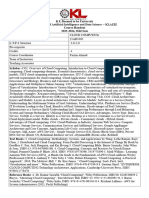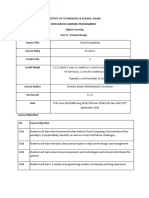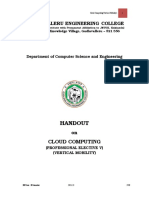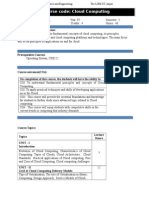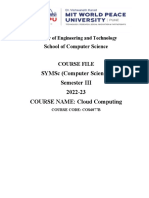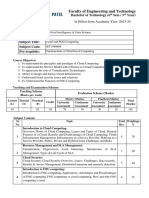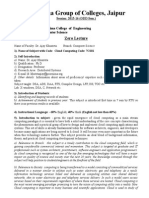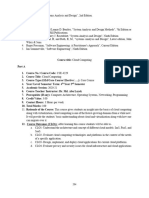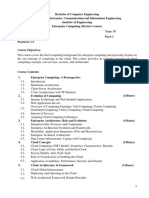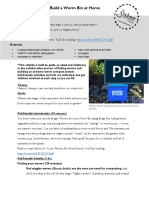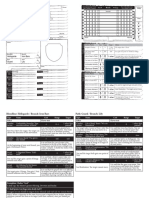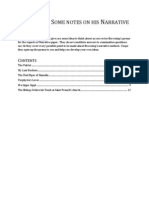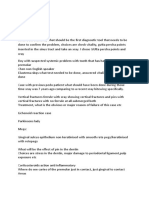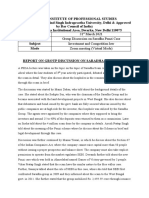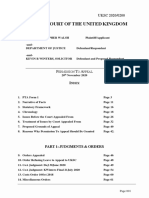0% found this document useful (0 votes)
30 views5 pagesSYLLABUS - CSA022 - Introduction To Cloud Computing With ML
The document outlines the course 'Introduction to Cloud Computing with ML' offered at Sharda University for B.Tech students in the Computer Science & Engineering department. It details the course objectives, outcomes, syllabus, and assessment methods, emphasizing the fundamental concepts of cloud computing and its applications in machine learning. The course aims to equip students with knowledge about cloud services, architectures, and the use of AWS for machine learning solutions.
Uploaded by
2023506040.nadeemCopyright
© © All Rights Reserved
We take content rights seriously. If you suspect this is your content, claim it here.
Available Formats
Download as DOC, PDF, TXT or read online on Scribd
0% found this document useful (0 votes)
30 views5 pagesSYLLABUS - CSA022 - Introduction To Cloud Computing With ML
The document outlines the course 'Introduction to Cloud Computing with ML' offered at Sharda University for B.Tech students in the Computer Science & Engineering department. It details the course objectives, outcomes, syllabus, and assessment methods, emphasizing the fundamental concepts of cloud computing and its applications in machine learning. The course aims to equip students with knowledge about cloud services, architectures, and the use of AWS for machine learning solutions.
Uploaded by
2023506040.nadeemCopyright
© © All Rights Reserved
We take content rights seriously. If you suspect this is your content, claim it here.
Available Formats
Download as DOC, PDF, TXT or read online on Scribd
/ 5
















